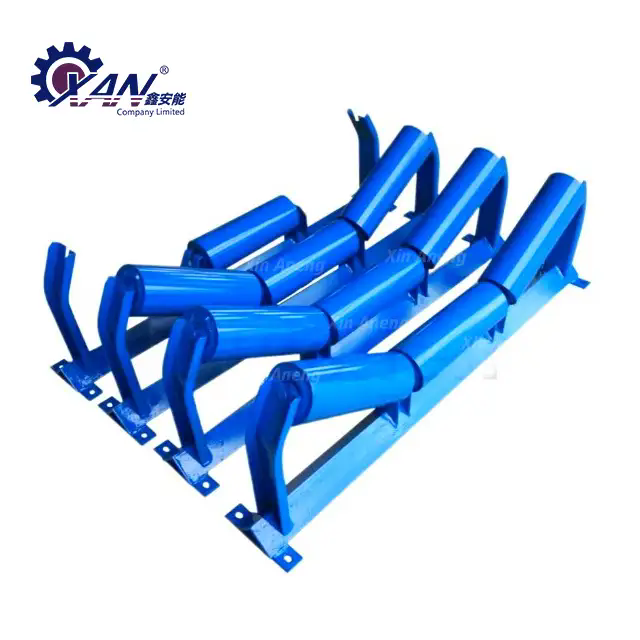Components of Conveyor Idlers
2024-06-06
A conveyor idler is an essential component of conveyor systems, particularly in the mining, aggregate, and material handling industries. It supports the conveyor belt and the load being conveyed, ensuring smooth, efficient operation. Here’s a detailed look at what conveyor idlers are and their various aspects:
Types of Conveyor Idlers
1. Carrying Idlers: These idlers support the loaded belt on the carrying side of the conveyor. They are typically set in a troughed arrangement to help contain the material on the belt.
2. Return Idlers: Located on the return side of the belt, these idlers support the empty belt as it returns from the discharge point to the loading point.
3. Impact Idlers: Positioned at the loading point of the conveyor, these idlers have a more robust design to absorb the impact of the material being loaded onto the belt. They often feature rubber discs or cushioning materials.
4. Self-aligning Idlers: These idlers help correct belt misalignment by pivoting and guiding the belt back to the centerline of the conveyor. They can be found on both the carrying and return sides of the belt.
5. Transition Idlers: Located at the ends of the conveyor, these idlers help the belt transition from a troughed shape to a flat shape or vice versa, reducing stress on the belt and the risk of spillage.
Components of Conveyor Idlers
- Rollers: The cylindrical components that actually contact the conveyor belt and rotate to support its movement. They can be made of various materials, including steel, rubber, or plastic.
- Frames: The structure that holds the rollers in place, ensuring they are correctly positioned and securely mounted to the conveyor frame.
- Seals and Bearings: Critical for the smooth rotation of the rollers, seals prevent contaminants from entering the bearing housing, while bearings ensure the rollers rotate with minimal friction.
Functions and Importance
- Support: Idlers support the conveyor belt and the load it carries, maintaining the belt’s shape and preventing sagging.
- Guide: Self-aligning idlers help keep the belt aligned, reducing wear and tear and preventing potential damage or spillage.
- Impact Absorption: Impact idlers absorb and distribute the shock of loading materials onto the belt, protecting both the belt and the frame of the conveyor.
Maintenance and Considerations
Regular inspection and maintenance of conveyor idlers are crucial to ensure their longevity and the efficient operation of the conveyor system. This includes checking for wear and tear, ensuring proper alignment, and lubricating bearings if necessary. Selecting the right type and quality of idlers based on the specific application and load requirements is also essential for optimal performance.
Conveyor idlers play a vital role in the functionality and efficiency of conveyor systems, making them indispensable in industries that rely heavily on material handling.



